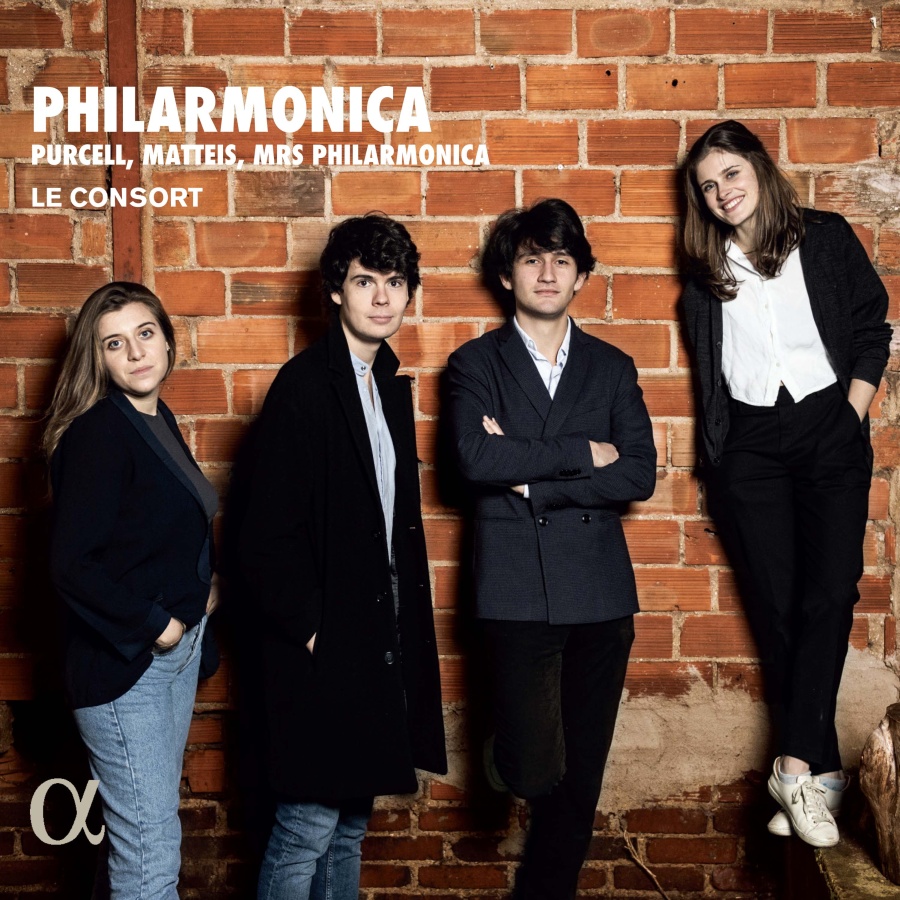
kompozytor
Purcell, Henry;
Matteis, Nicola;
Mrs Philarmonica
tytuł
Philarmonica
wykonawcy
Le Consort
nr katalogowy
Alpha 1011
opis
In the second half of the seventeenth century, London experienced an artistic golden age, with the arrival of many foreign musicians and the proliferation of theatres and concert halls where audiences came to listen to the stars of the moment. One of these musicians was the Italian Nicola Matteis, who arrived around 1660 and became the sensation of the London music scene. Purcell was only a child at the time and there is no record of their meeting, but it is very likely that he was familiar with Matteis’s works, including his Ayres, recorded here for the first time in a version for four-part consort. Exploration of this London effervescence yields to some surprising discoveries, such as the music of a mysterious composer who published trio sonatas around 1715 under the name Mrs Philarmonica. Le Consort presents the very first recording of this highly interesting music, probably influenced by Corelli and very likely written by a woman composer who, given the conventions of the time, made use of a pseudonym. Her true identity is unfortunately unknown to us.
•Purcell: Ten Sonatas in Four Parts: Sonata in G Minor, Z. 807
•Mrs Philarmonica: Sonata terza in G minor, Parte Prima
•Nicola Matteis: Suite in C Minor
•Purcell: Trumpet Tune in C Major, ZT. 698 (Arr. for Ensemble by Le Consort)
•Mrs Philarmonica: Sonata sesta in G Major
•Nicola Matteis: Diverse bizzarrie sopra la vecchia sarabanda o pur ciaccona
•Mrs Philarmonica: Sonata quinta in C Minor
•Purcell: The Queen's Dolour, Z. 670 (Arr. for Ensemble by Le Consort)
•Nicola Matteis: Suite in A Minor
•Mrs Philarmonica: Sonata quarta in B minor, Parte Prima
•Nicola Matteis: Suite in G Minor
•Purcell: Dioclesian, Z. 627, Act III: Chaconne. Two in one upon a ground
•Nicola Matteis: Maniera italiana
Works:
•Nicola Matteis: Suite in G Minor: Andamento malinconico
•Purcell: Ten Sonatas in Four Parts: Sonata in G Minor, Z. 807
•Mrs Philarmonica: Sonata terza in G minor, Parte Prima
•Nicola Matteis: Suite in C Minor
•Purcell: Trumpet Tune in C Major, ZT. 698 (Arr. for Ensemble by Le Consort)
•Mrs Philarmonica: Sonata sesta in G Major
•Nicola Matteis: Diverse bizzarrie sopra la vecchia sarabanda o pur ciaccona
•Mrs Philarmonica: Sonata quinta in C Minor
•Purcell: The Queen's Dolour, Z. 670 (Arr. for Ensemble by Le Consort)
•Nicola Matteis: Suite in A Minor
•Mrs Philarmonica: Sonata quarta in B minor, Parte Prima
•Nicola Matteis: Suite in G Minor
•Purcell: Dioclesian, Z. 627, Act III: Chaconne. Two in one upon a ground
•Nicola Matteis: Maniera italiana
nośnik
CD
gatunek
Muzyka klasyczna
producent
Alpha
data wydania
02-11-2023
EAN / kod kreskowy
3701624510117

(Produkt nie został jeszcze oceniony)
cena 79,00 zł
lubProdukt na zamówienie
Wysyłka ustalana indywidualnie.
Darmowa wysyłka dla zamówień powyżej 300 zł!
Darmowy kurier dla zamówień powyżej 500 zł!
sprawdź koszty wysyłki


































